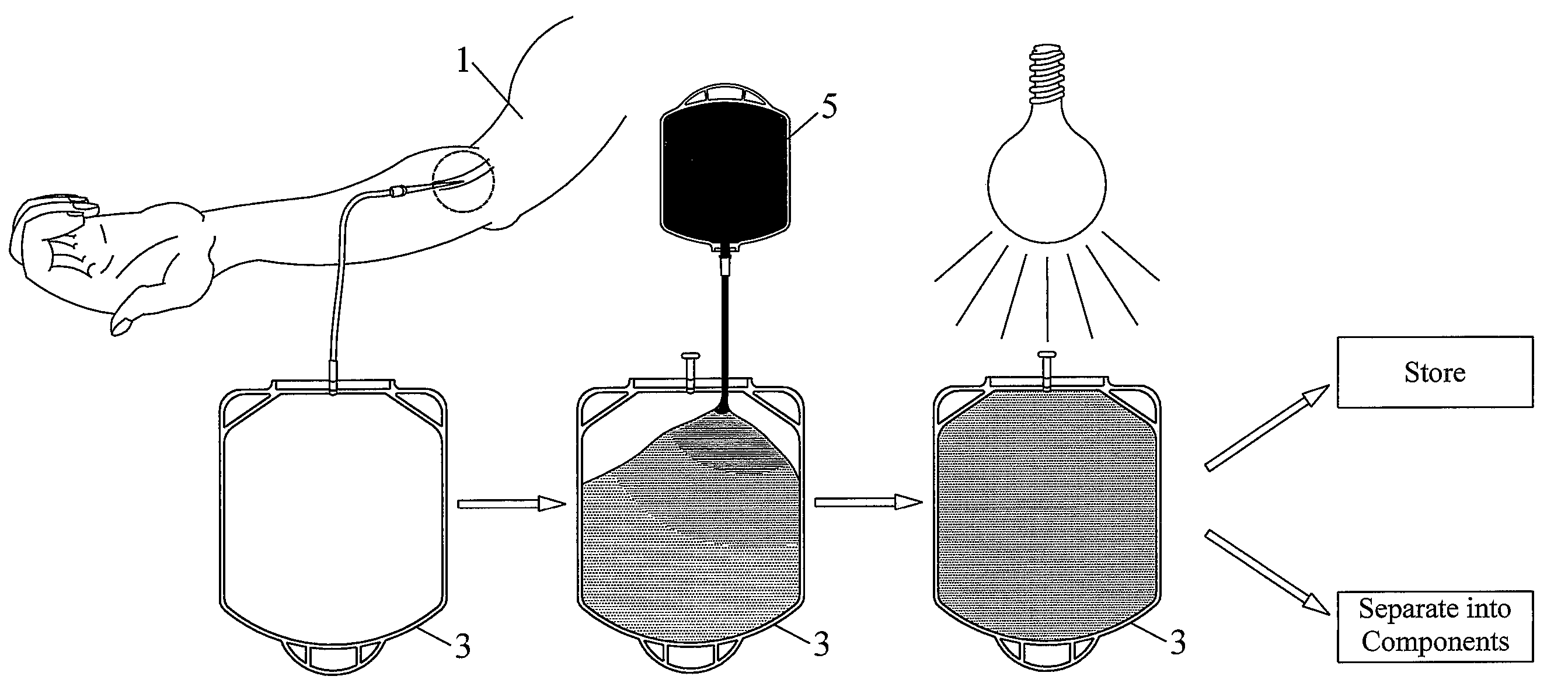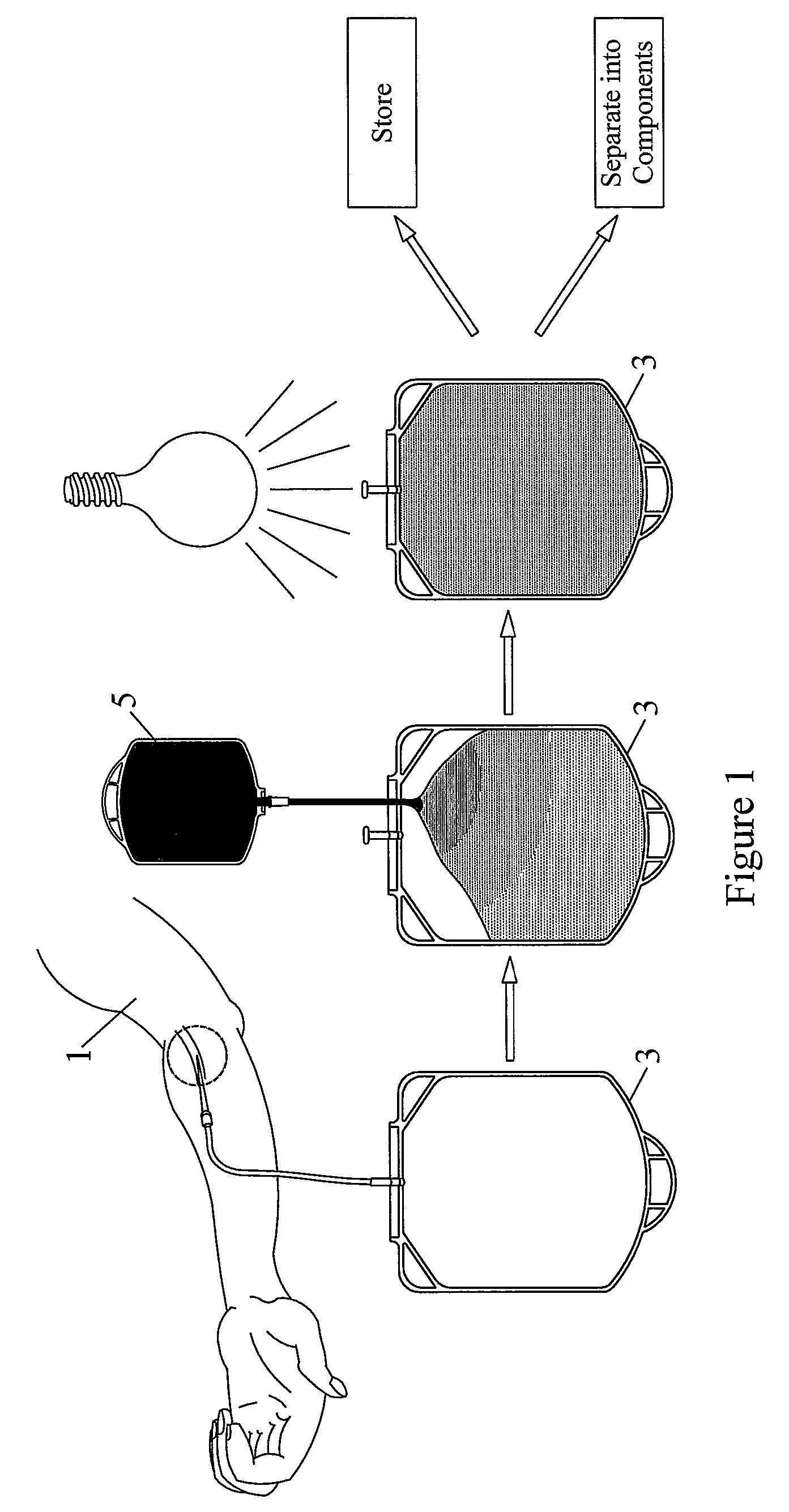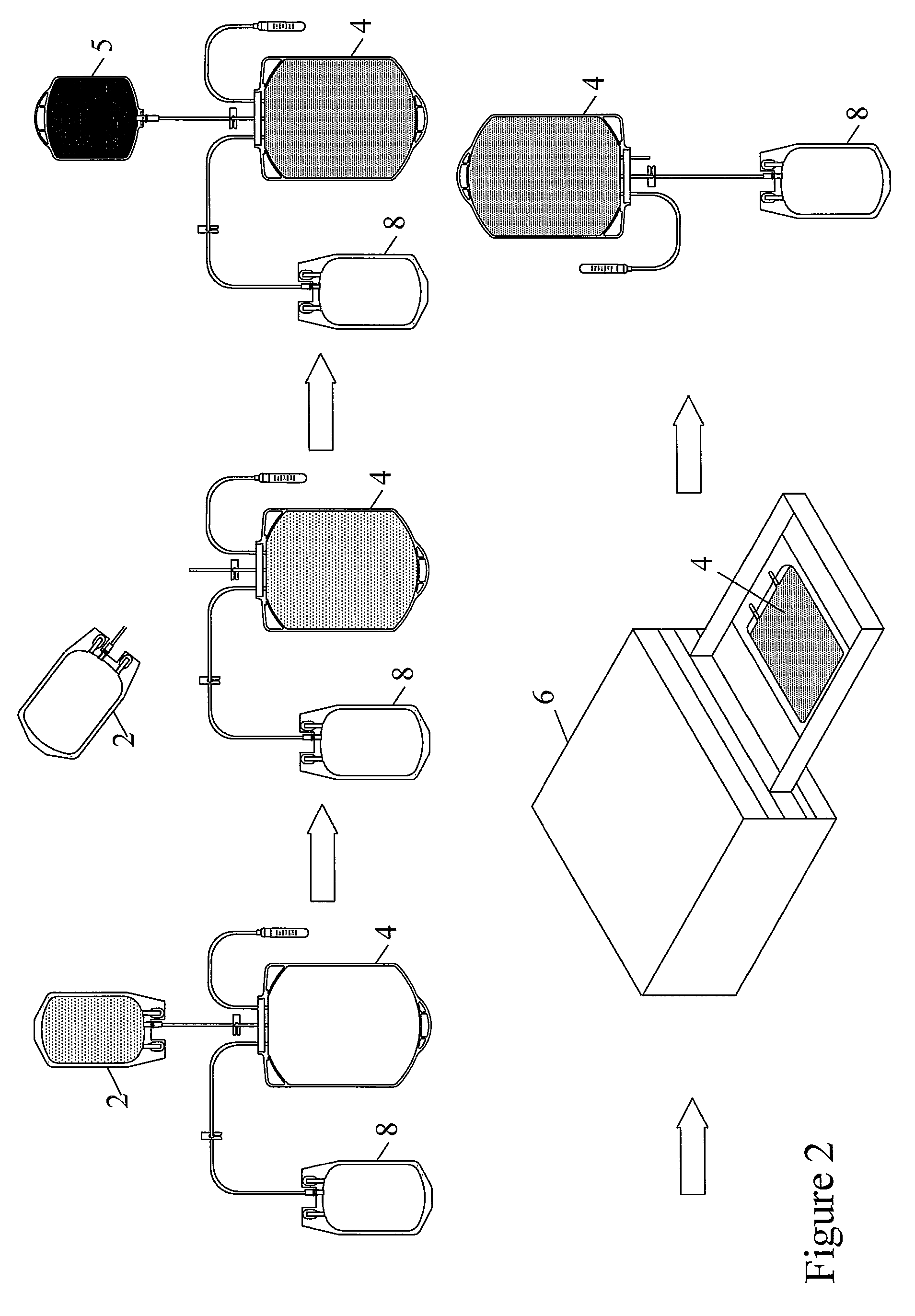Pathogen Inactivation of Whole Blood
a technology of inactivation and whole blood, which is applied in the direction of packaging foodstuffs, extracellular fluid disorder, packaged goods type, etc., can solve the problems of increasing the chance of inactivation of any pathogen which may be present, and contaminating blood supplies with infectious microorganisms such as hiv, hepatitis and other viruses and bacteria, so as to improve the chance of inactivation of any pathogens which may be presen
- Summary
- Abstract
- Description
- Claims
- Application Information
AI Technical Summary
Problems solved by technology
Method used
Image
Examples
example 1
[0096]Transfusion of blood products containing white blood cells (WBC) can result in the induction of immune responses that can negatively impact the transfusion recipient. These immunological consequences can include transfusion-associated graft-versus-host disease (TA-GvHD) and production of cytokines and alloantibodies. TA-GvHD, a donor-anti-recipient response, is almost always fatal and is mediated by proliferating T lymphocytes of the donor. The standard approach to inactivate leukocytes and prevent TA-GvHD has been to expose blood products to γ-irradiation.
[0097]In the following assays, non-leukoreduced units of fresh (RBC. For treated cells, riboflavin was added to the whole blood before illumination. After illumination, leukocytes were isolated from the whole blood units and the functionality of white blood cells (WBCs) was assessed for: (1) exhibiting cell activation (CD69 expression) in response to PMA (Phorbol 12-myristate 13-acetate), (2) WBC proliferation in response to...
example 2
[0110]To test whether pathogen inactivation of whole blood was effective in inactivating viruses which may be present in the whole blood, both non-enveloped and enveloped model viruses were tested. Hepatitis A (HAV), canine parvovirus (CPV), vesicular stomatitis virus (VSV) and infectious bovine rhinotracheitis virus (IBR) were the viruses used.
[0111]As can be seen in FIG. 10, log reduction of both non-enveloped (FIG. 10A) and enveloped (FIG. 10B) viruses increases linearly with respect to energy.
example 3
[0112]To test whether pathogen inactivation of whole blood was effective in inactivating clinically relevant levels of bacteria which may be present in the whole blood, low titer bacteria studies were done. After pathogen inactivation of whole blood, the whole blood was separated into a red blood cell (RBC) component and platelet rich plasma (PRP) component. The results are shown in Table 3 below. A + symbol means that some of the replicates of the cultures in the panel grew in under 5 days. A − symbol means that none of the replicates of the cultures in the panel grew in under 5 days.
TABLE 3Low bacteria titer studiesBacteria detected (+)or not detected (−) after treatment44 J / mLRBC80 J / mLRBC110 J / mLRBC(n = 8)(n = 3)(n = 3)RBCPRPRBCPRPRBCPRPS. epidermidisnotnot+ / −a+ / −a+−measuredmeasuredY. enterocoliticanotnot−−−−measuredmeasuredS. liquefaciens+ / −c+ / −d−−−−A. baumannii+ / −e+ / −d+ / −b+ / −b−−S. pyogenesnotnot+ / −b−−−measuredmeasureda1 of 2 replicates negativeb2 of 3 replicates negativec7 of ...
PUM
 Login to View More
Login to View More Abstract
Description
Claims
Application Information
 Login to View More
Login to View More - R&D
- Intellectual Property
- Life Sciences
- Materials
- Tech Scout
- Unparalleled Data Quality
- Higher Quality Content
- 60% Fewer Hallucinations
Browse by: Latest US Patents, China's latest patents, Technical Efficacy Thesaurus, Application Domain, Technology Topic, Popular Technical Reports.
© 2025 PatSnap. All rights reserved.Legal|Privacy policy|Modern Slavery Act Transparency Statement|Sitemap|About US| Contact US: help@patsnap.com



